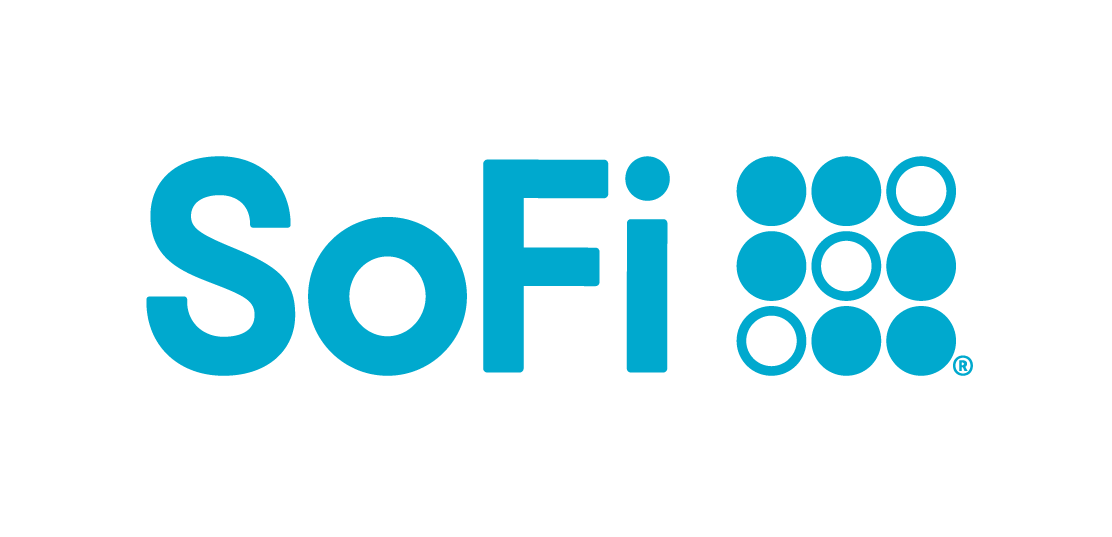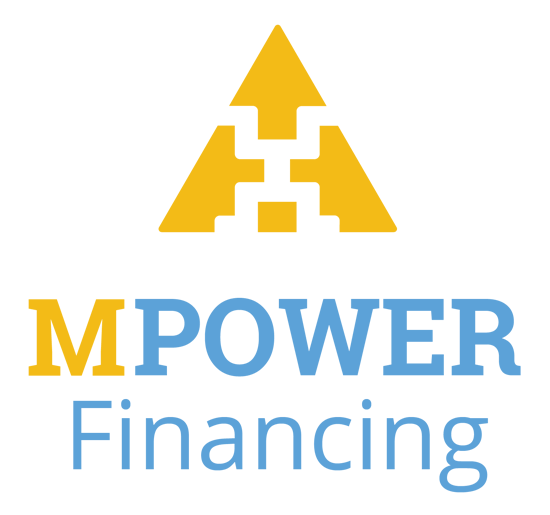Student Loan Repayment Plans: What’s the Best Option For You?
Borrowers can choose between three federal student loan repayment categories, including some that offer loan forgiveness. Major changes start in 2026.

Many, or all, of the products featured on this page are from our advertising partners who compensate us when you take certain actions on our website or click to take an action on their website. However, this does not influence our evaluations. Our opinions are our own. Here is a list of our partners and here's how we make money.
Federal student loan borrowers can choose from three categories of repayment plans:
- Standard repayment plan. Fixed monthly payments, fastest payoff.
- Income-driven repayment (IDR) plans. Payment based on your income; forgiveness after 20–25 years. There are four different IDR plans.
- Graduated repayment and extended repayment. Lower starting payments that may rise over time; no forgiveness.
Starting July 1, 2026, major changes from the Trump administration’s budget bill will reduce available options and alter repayment terms.
Here’s an overview of the upcoming repayment plan changes for federal student loans, existing repayment plans and options for private loan borrowers.
Student loan repayment plan changes start in 2026
Starting July 1, 2026, Trump’s budget bill changes student loan repayment options in these ways:
- The new Repayment Assistance Plan (RAP) replaces all current IDR plans.
- Graduated and extended repayment plans end for new borrowers.
- The standard plan gets new, potentially longer terms.
If you borrow any new federal loan after July 1, 2026 — even if you have older loans — all your loans must follow the new rules. That’s because all of your loans must be repaid under the same plan.
Key deadlines for student loan repayment plan changes
Before July 1, 2026
Only borrowers who took out loans before this date can qualify for the following plans until they pay off their loans: the current standard plan; Income-Based Repayment (IBR), which is a type of IDR plan; or graduated or extended repayment plans.
They may also qualify for the new RAP plan.
July 1, 2026
New repayment plan rules from the Trump administration’s budget bill start to take effect.
Deadline to consolidate parent PLUS loans to stay in the income-driven repayment system. (After consolidating your parent PLUS loans, you still need to enroll in an income-driven repayment plan.)
July 1, 2028
Deadline to switch into the Income-Based Repayment (IBR) plan if you want to avoid being moved into the new RAP plan.
If you have parent PLUS loans, you must switch into the Income-Contingent Repayment (ICR) plan.
Advertisement



Student loans from our partners

on SoFi® website
SoFi® 

Fixed APR
4.24-9.99%
Min. credit score
650
on Earnest website
Earnest 
Fixed APR
4.79-9.99%
Min. credit score
665

on Credible’s website
ELFI 

Best for faster repayment options
Fixed APR
4.88-8.44%
Min. credit score
680
Federal student loan repayment plans
Standard repayment plan
Who it’s for: The standard repayment plan is best for borrowers who want to pay off their loans quickly and minimize interest costs. Most borrowers who can manage standard plan payments will typically have debt equal to or less than their income.
- Term: 10 years if you took our loans prior to July 1, 2026. If you have new loans, your term could be 10, 15, 20 or 25 years, depending on the amount owed.
- Payment structure: Fixed monthly payments (plus interest). Minimum payment of $50 per month.
- Benefits: Fastest payoff for most borrowers; lowest total interest paid compared to plans with longer repayment terms.
- Drawbacks: If you owe a significant sum, your monthly bills could be more than you can afford. You don’t have built-in payment flexibility if income drops, though you can ask your student loan servicer about a deferment or forbearance.
- Eligibility note: All borrowers are automatically placed into the standard plan after their six-month grace period ends, unless they select a different plan.
| Original student loan balance | New standard plan repayment term |
|---|---|
| Up to $24,999. | 10 years (120 monthly payments). |
| $25,000-$49,999. | 15 years (180 monthly payments). |
| $50,000-$99,999. | 20 years (240 monthly payments). |
| $100,000 or more. | 25 years (300 monthly payments). |
Income-driven repayment (IDR) plans
Income-driven repayment (IDR) refers to a category of repayment plans that tie your monthly bill to a portion of your income and extend your time in repayment to 20 or 25 years. When the term is over, any remaining debt gets forgiven.
IDR is best if you need lower monthly payments. If your income changes or you lose your job, you can adjust your monthly IDR bills and even qualify for $0 payments.
If you’re pursuing IDR student loan forgiveness or Public Service Loan Forgiveness, IDR plans are also the best choice. To maximize the amount you get forgiven, choose the IDR plan that gives you the lowest monthly payment.
However, because IDR plans extend your repayment term, you may pay more over time as interest accumulates.
To get into an IDR plan, you must apply through your student loan servicer or by going to studentaid.gov/IDR.
Below are the four existing types of income-driven repayment plans, plus one new plan that will roll out in 2026.
Income-Based Repayment (IBR)
Who it’s for: Borrowers who want to avoid being moved into the new Repayment Assistance Plan (RAP) and keep payments tied to income long-term.
- Term: 20 years, if you started borrowing after July 1, 2024; 25 years, if you have pre-July 1, 2014 loans.
- Payment structure: 10% of discretionary income per month, if you started borrowing after July 1, 2024; 15% of discretionary income, if you have pre-July 1, 2014 loans. (Calculate your discretionary income.)
- Benefits: Keeps income-driven payments. This is the only income-driven option that allows you to avoid RAP by enrolling before July 1, 2028. Also, payments will never be higher than they would be for you under the standard plan.
- Drawbacks: May result in higher payments than the SAVE or PAYE plans, which are covered later. Less favorable terms if you have older loans.
- Eligibility note: Enroll by July 1, 2028 to keep IBR until you pay off your loans or reach forgiveness. Borrowers no longer need to prove a partial financial hardship to qualify for this plan.
» Learn more about income-based repayment
Income-Contingent Repayment (ICR)
Who it’s for: Best for borrowers with federal parent PLUS loans who want to make payments tied to income.
- Term: 25 years.
- Payment structure: 20% of discretionary income.
- Benefits: Only IDR option for parent PLUS borrowers.
- Drawbacks: Usually the highest payments among IDR plans; forgiveness takes 25 years.
- Eligibility note: Must consolidate parent PLUS loans into a Direct Consolidation Loan before July 1, 2026 to enroll. If you miss this deadline, you’ll be permanently blocked from income-driven repayment and limited to the standard plan.
» Learn more about income-contingent repayment
Pay as You Earn (PAYE)
Who it’s for: Borrowers with graduate school loans; borrowers who expect to earn a high income in the future.
- Term: 20 years.
- Payment structure: 10% of discretionary income.
- Benefits: Shortest forgiveness timeline and lowest payments for people with graduate school debt. Payments will never be higher than they would be for you under the standard plan.
- Drawbacks: Plan is going away for new and existing borrowers by July 1, 2028.
- Eligibility note: PAYE enrollment closes July 1, 2027, so you must switch to the IBR plan by July 1, 2028 to avoid being moved to RAP. Also, you must have taken out your loans on or after Oct. 1, 2011 to qualify for PAYE.
» Learn more about Pay as you Earn (PAYE)
Saving on a Valuable Education (SAVE)
Who it’s for: Existing enrollees. In early 2024, Republican-led states sued over the SAVE plan, forcing it to close to new borrowers. As a result, existing borrowers have been in a payment freeze for over a year. The Biden administration created the plan in 2023, with the most generous terms among IDR options.
- Term: 20 years for people with only undergraduate loans; 25 years if any graduate school debt.
- Payment structure: 10% of discretionary income — and more income is protected from student loan payment calculations than any other IDR plan. Protected income is the amount of your earnings that is not considered discretionary. (Note: SAVE payments are currently frozen due to lawsuits; interest accrual resumed Aug. 1, 2025).
- Benefits: Most affordable monthly payments for most borrowers. The government covers any leftover unpaid interest each month, preventing ballooning balances.
- Drawbacks: Closed to new borrowers; legal uncertainty about the future of the plan and long-term options for existing SAVE borrowers. (Read more about what borrowers can do about the SAVE lawsuits.)
- Eligibility note: SAVE borrowers must switch to IBR before July 1, 2028 to avoid being moved to RAP.
» Learn more about Saving on a Valuable Education (SAVE)
Repayment Assistance Plan (RAP)
Who it’s for: Borrowers with loans first disbursed on or after July 1, 2026 who want payments tied to income or who want to pursue student loan forgiveness programs, including Public Service Loan Forgiveness. It’s also the best option for current SAVE, PAYE and ICR borrowers (except parent PLUS borrowers) who miss the 2028 IBR enrollment deadline.
- Term: 30 years.
- Payment structure: Higher payments than current IDR plans for most borrowers. The more you earn, the larger the percentage of your income that will go to monthly student loan payments.
- Benefits: Income-driven payments for new borrowers; student loan forgiveness eligibility.
- Drawbacks: Will result in higher monthly payments for most borrowers than SAVE, PAYE or IBR.
- Eligibility note: Borrowers enrolled in SAVE, PAYE and ICR (except parent PLUS borrowers) will be automatically transferred to RAP by July 1, 2028. If you don’t want to get on RAP, you must enroll in the IBR plan before that date.
» Learn more about Repayment Assistance Plan (RAP)
Compare IDR plans vs. RAP
| Repayment plan name | Repayment Assistance Plan (RAP) | Income-Based Repayment (IBR) | Saving on a Valuable Education (SAVE) | Income-Contingent Repayment (ICR) | Pay as You Earn (PAYE) |
|---|---|---|---|---|---|
| Repayment term / time to forgiveness | 30 years. | 20 or 25 years. | 20 or 25 years. | 25 years. | 20 years. |
| Amount of protected income (remainder is discretionary) | None. | 150% of income above the federal poverty line for your location and family size. | 225% of income above the federal poverty line for your location and family size. | 100% of income above the federal poverty line for your location and family size. | 150% of income above the federal poverty line for your location and family size. |
| Payment amounts | $10, or 1-10% of your adjusted gross income. | 10% or 15% of discretionary income. | 10% of discretionary income. | 20% of discretionary income. | 10% of discretionary income. |
| Family size deductions | $50 monthly discount per dependent child. | Formula takes total family size into account. | Formula takes total family size into account. | Formula takes total family size into account. | Formula takes total family size into account. |
| Interest accrual | Unpaid interest each month is waived, so balance can’t grow. | Unpaid interest each month waived for first three years on subsidized loans; no interest waiver on other loan types. | Unpaid interest each month is waived, so balance can’t grow. | No interest subsidy. Unpaid interest builds each month, potentially increasing outstanding balance. | Unpaid interest each month waived for first three years on subsidized loans; no interest waiver on other loan types. |
🤓 Nerdy Tip
The best repayment plan for you depends on your financial situation, amount of student debt and goals. Before choosing a new plan, plug your information into the Education Department's Loan Simulator to estimate your payments. Generally, you can change repayment plans at any time. Extended and graduated repayment plans
Not all borrowers fit neatly into standard or income-driven repayment. If you need lower monthly payments but IDR doesn’t make sense for your income level, you may consider the extended or graduated repayment options.
With both of these plans, you start your repayment journey with lower monthly payments that may gradually increase over time. You won’t be eligible for loan forgiveness, including Public Service Loan Forgiveness. That means you’ll pay your debt off completely by the end of your repayment term.
Extended or graduated repayment may be a good choice for professionals who expect their income to grow significantly during their career — like doctors, who don’t earn as much during residency but then go on to earn high salaries. These plans also allow borrowers to have predictable payments over time.
These plans are only available to borrowers who take out loans prior to July 1, 2026.
Extended repayment plan
Who it’s for: Borrowers with more than $30,000 in federal loans who need lower payments than the standard 10-year plan offers.
- Term: Up to 25 years.
- Payment structure: Can be fixed (same payment each month) or graduated (payments increase every two years).
- Benefits: Payments are generally lower than under the standard or graduated repayment plans.
- Drawbacks: You’ll likely pay significantly more interest over time compared with 10-year standard repayment, because it accumulates over a much longer period of time. No possibility for loan forgiveness.
- Eligibility note: Only borrowers who take out loans before July 1, 2026 can use this plan. Must owe more than more than $30,000 to qualify.
» Learn more about the extended repayment plan
Graduated repayment plan
Who it’s for: Borrowers whose income is low now, but likely to rise steadily over time.
- Term: 10 years (up to 30 for consolidation loans).
- Payment structure: Starts with low monthly payments — sometimes interest-only — then increases every two years until your repayment term is over and you pay off your debt.
- Benefits: May free up money in the short term for other goals (like a home down payment) while costing less in interest than many IDR plans.
- Drawbacks: Payments can eventually triple. You need to be confident you’ll afford the higher bills later. Standard repayment is usually the better choice if you can handle it from the start. No possibility for loan forgiveness.
- Eligibility note: Only borrowers who take out loans before July 1, 2026 can use this plan.
» Learn more about the graduated repayment plan
Repayment plans for private student loans
If you have private student loans, check your loan origination documents or ask your lender about repayment options. Most private lenders don’t offer repayment plans tied to your income , though some may temporarily reduce payments if you call and ask.
If you have a credit score in at least the high-600s — or a co-signer who does — refinancing your private student loans at a lower interest rate can lower your monthly bills and the amount you’ll pay overall.
Dozens of lenders offer student loan refinancing; compare your options before you apply to get the lowest possible rate.
Article sources
NerdWallet writers are subject matter authorities who use primary,
trustworthy sources to inform their work, including peer-reviewed
studies, government websites, academic research and interviews with
industry experts. All content is fact-checked for accuracy, timeliness
and relevance. You can learn more about NerdWallet's high
standards for journalism by reading our
editorial guidelines.
Related articles
AD
Refinance Your Student Loans with Earnest: smarter rates, total flexibility, no fees.
Check rate
on Earnest's website

AD

Refinance Your Student Loans with Earnest: smarter rates, total flexibility, no fees.
- Fixed APRs starting at 4.79%, Variable Rates starting at 5.88%;
- Customize your term down to the month (5–20 years);
- Skip one payment every 12 months.
Check rate
on Earnest's website
AD
Refinance Student Loans with SoFi:
low rates, flexible terms, no fees.
Check rate
on SoFi®'s website

AD

Refinance Student Loans with SoFi:
low rates, flexible terms, no fees.
- Rates: 4.74-9.99% (fixed) / 5.99-9.99% (variable) APR;
- Terms between 5–20 years, plus features like interest-only SmartStart for residents;
- Zero application/origination/prepayment fees — ever.

Check rate
on SoFi®'s website










